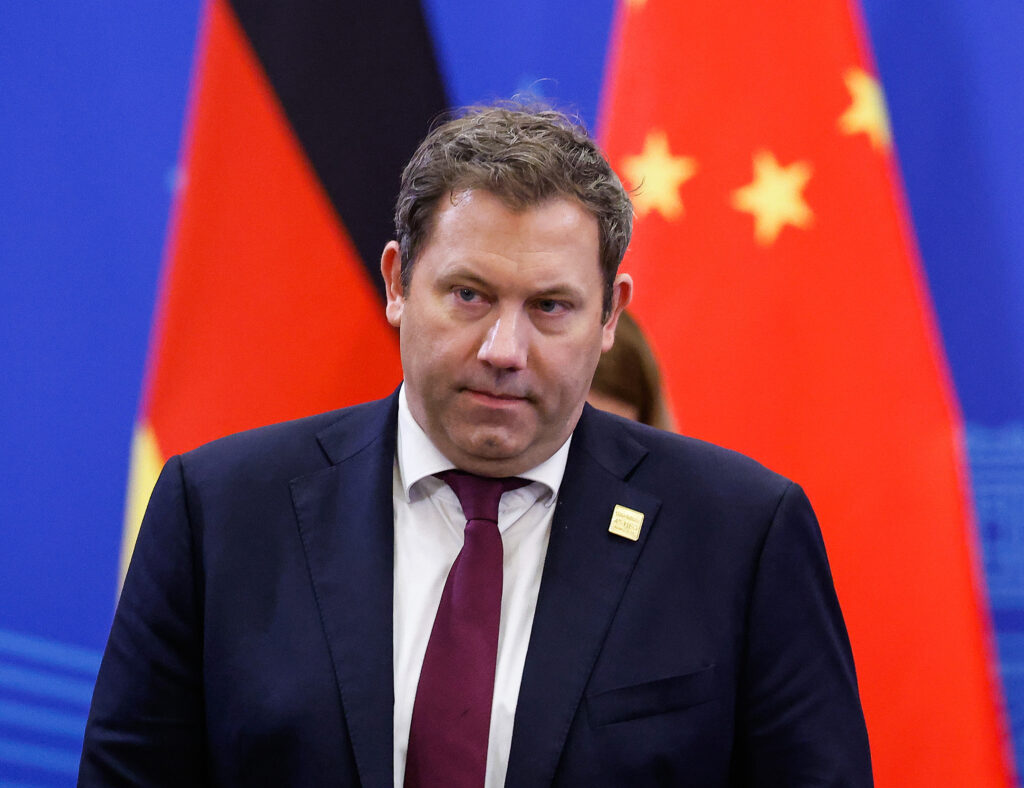Germany says China promised ‘reliable’ rare earth supply
Germany’s finance minister said Thursday Beijing had made a “clear” commitment on ensuring rare earth supplies, following the first visit to China by a minister from Chancellor Friedrich Merz’s government.Germany and China have long had deep economic ties, but those have frayed in recent times over issues ranging from claims of unfair trade practices to protectionism.One particularly thorny issue has been China’s moves to restrict exports of rare earths, crucial to many sectors worldwide from automotive to electronics.But after wrapping up a visit to Beijing and Shanghai, Finance Minister Lars Klingbeil said he had received a “clear commitment from the Chinese side that there will be reliable access and supply chains for rare earths and critical raw materials, and that the Chinese side stands by this”.”This was a very important point, publicly committed to, and we will remind the Chinese side of this,” added Klingbeil, who is also German vice chancellor, as he visited Singapore following his China trip.China dominates the mining and processing of rare earths but has been tightening control over their export this year, against the backdrop of rising geopolitical tensions, especially with Washington.Beijing introduced sweeping new measures last month, before it agreed to suspend some export restrictions following talks between the US and Chinese presidents.Manufacturers in Germany, Europe’s industrial powerhouse, had been particularly hit by the export curbs.The difficulties in the China-Germany relationship were illustrated last month when Foreign Minister Johann Wadephul cancelled a visit to China at the last minute, saying that meetings with key officials could not be arranged. But there are signs that both sides want to improve their crucial economic relationship, particularly as the United States pursues its “America first” agenda under President Donald Trump.Klingbeil took part in an annual “financial dialogue” between German and Chinese officials in Beijing on his trip.This had sent “a clear signal of German-Chinese cooperation”, he said. “That was my goal in coming here, and it worked well. I believe I was able to contribute to ensuring good German-Chinese relations.”
Mondial-2026: l’Italie affrontera l’Irlande du nord en demi-finale de barrages
L’Italie recevra l’Irlande du nord en mars en demi-finale des barrages européens, première étape pour tenter de décrocher l’un des six derniers tickets pour le Mondial-2026 après deux Coupes du monde manquées.Sélection de loin la plus étoilée du tirage au sort des barrages réalisé jeudi au siège de la Fifa, avec quatre titres mondiaux, la Nazionale pourrait ensuite affronter le vainqueur de Pays de Galles-Bosnie-Herzégovine, qui accueillera la finale du tableau A.Sortis mercredi soir du Top 10 de la Fifa (12e, -3 places), les Azzurri restent sur deux éliminations en barrages, contre la Suède pour la Coupe du monde 2018 (défaite 1-0, nul 0-0), et contre la Macédoine du nord (défaite 1-0) pour le Mondial-2022.Dans le tableau B, les demi-finales opposeront Ukraine-Suède et Pologne-Albanie, alors que le tableau C mettra aux prises Turquie-Roumanie et Slovaquie-Kosovo, et le tableau D Danemark-Macédoine du nord et République Tchèque-Irlande.Les demi-finales seront disputées le 26 mars et les finales le 31 mars 2026, toutes sur une rencontre unique.Outre les quatre places attribuées à la zone Europe, deux autres seront en jeu pour le reste du monde: les deux meilleures équipes au classement Fifa, l’Irak et la République démocratique du Congo, attendront en finale les vainqueurs des deux prébarrages entre les quatre autres équipes.Dans le premier tableau, la Nouvelle-Calédonie et la Jamaïque se rencontreront pour pouvoir affronter la RD Congo, et dans le second, le vainqueur de Bolivie-Suriname ira défier l’Irak.Ce tournoi intercontinental se tiendra au cours de la fenêtre internationale prévue du 23 au 31 mars 2026, dans les stades mexicains de Guadalajara et Monterrey, sans que la répartition exacte des rencontres ne soit encore connue.


